Types of Photovoltaic Cell
We discussed about the photovoltaic or solar cell in our earlier post. So, we have an idea now that the operation of a PV cell involves two steps. Absorption of photon by the materials leading to generation of free electrons and then the separation of the electron-hole pairs resulting in electricity flow in the external circuit.
Now let’s have a look into the different types of Photovoltaic (PV) cells. PV cells are being manufactured from different materials and they all are used for converting the solar energy to usable electricity. However, the most common of these materials which is being used to make industrial grade solar cells is crystalline silicon due to its semiconducting properties. Main types of PV cells that are made of silicon are:
- Mono-crystalline Silicon Cell
- Ploy-crystalline Silicon Cell
- Thin Film Silicon Cell
Crystalline Silicon PV Cell
Technology used for producing crystalline silicon is the most commonly used technology for manufacturing the PV cells available in market today. The process involves melting and crystallising of silicon into ingots [1] of pure silicon. Out of these ingots, thin slices known as wafers [2] are cut either from a single crystal or from a block of crystals resulting in mono-crystalline and poly-crystalline cells respectively.
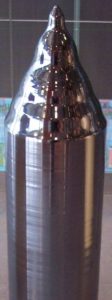

Let’s see a brief comparison between the two crystalline silicon cells[3]:
| Monocrystalline Silicon Cell | Polycrystalline Silicon Cell |
| Made using a single cylindrical crystal of Silicon | Made from cells cut from a recrystallised silicon ingot |
| Efficiency ranges from 14 to 20% | Efficiency ranges from 10 to 15% |
| Power per unit area is more | Power per unit area is less |
| Average life of cell is more | Average life of cell is less |
| Expensive | Less Expensive |
| Performs better in low light conditions | Performance gets affected in low light conditions |
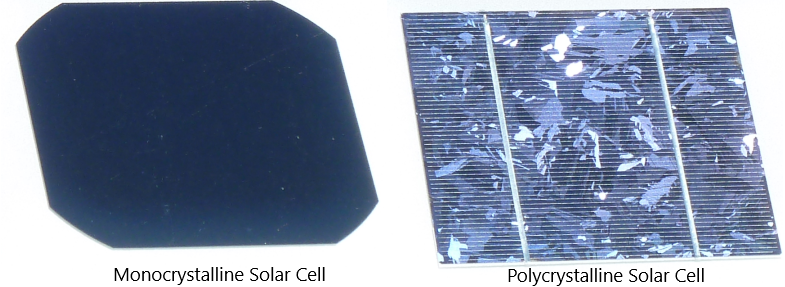
Thin Film Silicon PV Cell
Amorphous Silicon is used for making thin film silicon PV cell. Silicon is deposited in a thin homogenous layer onto surface like glass or rubber to make the amorphous silicon cells. Thin film cells are not very efficient, and the efficiency vary around 6% on an average. Also, the power output reduces very fast in the first few months of use. However, amorphous silicon can be deposited on a wide range of surfaces and makes it ideal for curved surfaces, as shown in figure [4], and for integrating directly on the roofing materials. it also widely used in consumer electronics and applications which have low power requirements.
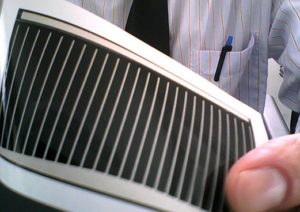
Other Types of PV Cell
We have seen the major types of silicon-based PV cells which are mostly used. However, there are several other technologies and materials which are also used in the manufacturing of PV cells.
- Cadmium Telluride (CdTe): It’s a type of thin film PV cell. Average efficiency is around 8 %.
- Copper Indium diSelenide (CIS): It’s a type of thin film PV cell. Average efficiency is around 10 %.
- Copper Indium Gallium diSelenide (CIGS): It’s a type of thin film PV cell. Average efficiency is around 12%.
- Dye-Sensitive PV Cells: In this instead of using a solid state PN junction to convert sunlight into electricity, an electrolyte is used. Photosensitive dye is used on polymer film to manufacture the cell. Dye sensitized PV cells look like the given image [5].
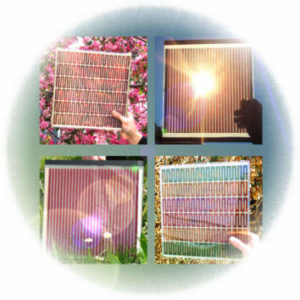
References:
- CC BY-SA 3.0, https://commons.wikimedia.org/w/index.php?curid=314282
- By Oregon Department of Transportation – Wafers on the conveyor Uploaded by Smallman12q, CC BY 2.0, https://commons.wikimedia.org/w/index.php?curid=24381582
- By Klaus Mueller – This image is a cutout of an image by Klaus Mueller, CC BY-SA 3.0, https://commons.wikimedia.org/w/index.php?curid=34948067
- By Dantor – Own work, CC BY-SA 3.0, https://commons.wikimedia.org/w/index.php?curid=6733526
- By Ronald vera saavedra colombia (bogota)ISE; – Transferred from de.wikipedia to Commons., Public Domain, https://commons.wikimedia.org/w/index.php?curid=1219106

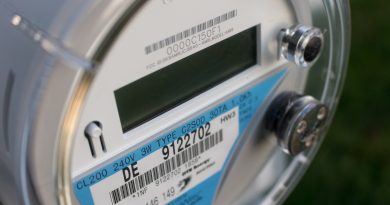

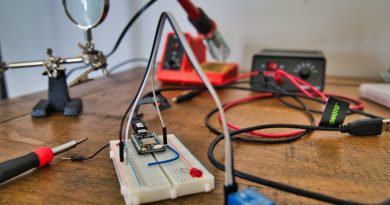
Pingback: What is Solar Photovoltaic? - SolarPost
Pingback: India’s Journey in Solar PV - SolarPost
Pingback: Solar PV Panel - SolarPost
Pingback: I-V Curve in Solar PV - SolarPost